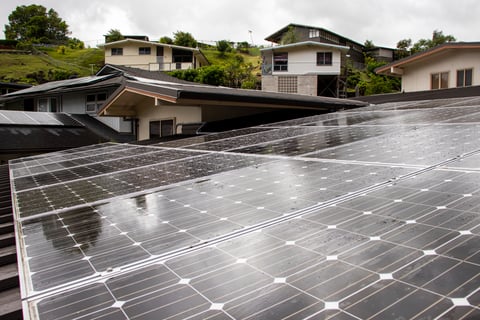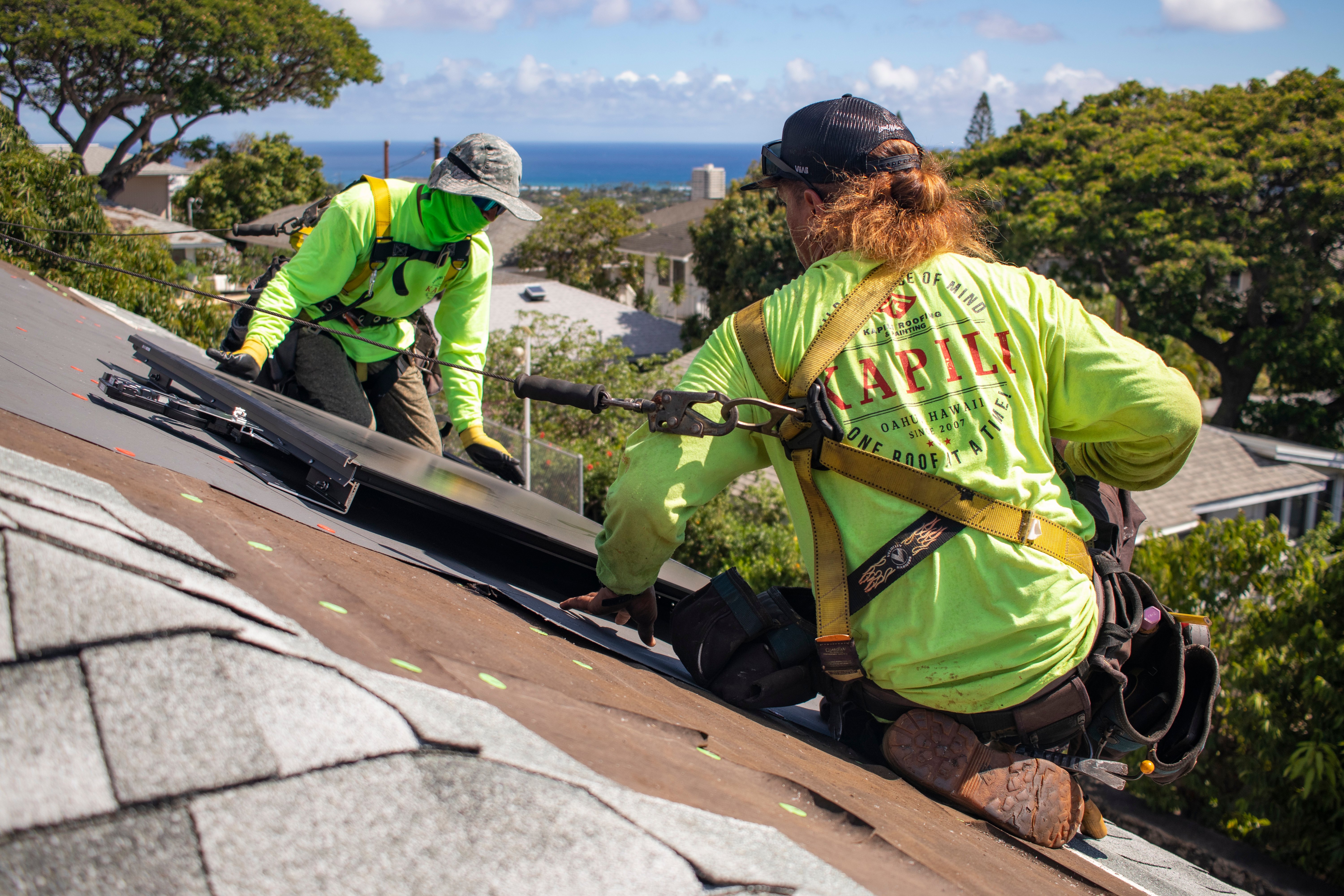What Happens When A Solar Panel Breaks?
In Hawaii, businesses and residents alike have rapidly adopted solar power. With the twin benefit of cleaner energy at a lower cost, it's easy to see why solar panels have become so widespread on the islands. But one problem has put some off from installing solar panels on their homes - what happens when a panel breaks?
Manufacturers build solar panels to withstand heavy beatings from storms and bad weather. However, that doesn't mean they are impervious to damage, and they are susceptible to breaking if not treated with the appropriate level of care. Damage could reduce the panel's energy output or prevent it from working entirely.
We're going to explore the most common ways that rooftop solar panels in Hawaii break and how to best prevent such damage from occurring. With an estimated average lifespan of twenty-five years, each panel on your roof is a long-term investment. As you read this article we'll show you how to get the most value from them.
How Do Solar Panels Break?
Regardless of where they are on your property, all solar panels can break in two ways - direct impact or degradation. Direct impact occurs when a sufficiently strong force comes into contact with the panel, whereas degradation happens when a panel component naturally breaks down or is exposed to the elements. Note that solar panels don't have moving parts, so they don't suffer mechanical breakdowns.
Of course, these two classifications are pretty vague. To protect your panels, you need to know the specifics of how they fail. Thankfully, our experienced technicians know just what dangers you should keep an eye out for.
#1. Water Damage
Panels have to be incredibly durable to survive harsh weather. The biggest threat to rooftop solar panels is hailstones, though hail is rare here in Hawaii. Still, other kinds of weather can threaten solar panels on the islands.

Water damage isn't a severe risk when your panels are new, but as they age, their seals weaken. Once the seals are damaged, rainwater can get inside the panel and wreak havoc on its components. Water can even short-circuit the panel entirely, rendering it useless.
The solution is to check and reseal your panels every few years. Unless they have suffered other damage somehow, this will keep water locked out of the panel and protect the inner components. We always recommend that our clients let us perform this maintenance work every few years.
#2. Debris Scratches
Solar panels feature a sheet of tempered glass that offers protection while still allowing energy absorption. It takes a lot of force to put a dent in this glass, let alone break it. However, breakage shouldn't be your primary concern when it comes to the glass in your panels.
Debris, like leaves or even small twigs, can brush against the surface, causing microscopic scratches. They may be so small that you fail to notice them, but their presence prevents the cells within the panel from thoroughly absorbing light, reducing their energy output. Deeper scratches caused by heavier objects can be even more damaging.
The best way to prevent your solar panels from getting scratched is to cut back any branches that hang over or near your rooftop. You should also check and clean your roof after every storm. If anything is left behind, the next gust of wind could drag it across your panels and harm the glass.
#3. Standing On Panels
It should go without saying that you should not, under any circumstances, stand on solar panels. They simply are not designed to support a person's weight, and if you try, you could harm yourself and the panel as well. But you would be surprised by the number of people who walk on their panels when working on their roof and never give it a second thought.
Sometimes people feel like they have to walk on panels because of how the installers arranged them during installation. Either they can't access part of the roof or every panel to perform maintenance without walking across the panel arrangement. However, doing so can result in minuscule cracks that, much like microscopic scratches, reduce the panel's overall efficiency.
It's possible to keep your roof accessible and still have solar panels installed. Careful panel arrangements allow for ample walking space around them. However, this does depend on the number of panels and the size of your roof.
Types of Degradation
The clock starts ticking on your solar panels from the moment that installation begins. Most manufacturers estimate a lifetime of twenty-five to thirty years for their panels, but the truth is that they can produce energy well beyond this time span. However, they begin to suffer worsening degradation.
Nothing lasts forever, and solar panels are no expectation. The complex components that allow them to create energy will naturally lose efficiency over time. However, certain environmental factors can exacerbate the process.
#1. Extreme Heat
There's a common misconception among homeowners that solar panels thrive in hot conditions. After all, they need sunlight to create energy, and the sun is creating heat in the first place. Such reasoning makes sense, but only if you don't understand how solar panels work.
.jpg?width=480&name=Larry%20Sugai%20(C5).jpg)
Solar panels utilize photons from the sun to activate electrons in the panel's cells. When these electrons are activated, they generate electricity. However, the photons are part of the sunlight and are independent of any heat.
Why is the difference important? Because electrons pick up more energy from photons when the temperature is cooler. So a hot sunny day would produce less energy than one that is just as bright but colder.
Exposure to excessive heat for an extended period will reduce energy output and degrade the cell's internal components. While there's no accounting for the weather, you can minimize this problem by opting for monocrystalline panels. They maintain higher levels of performance during warmer periods.
#2. Solar Inverter Failure
In terms of electrical current, solar panels generate DC, but everything in your home operates on AC. Before your panels can release energy into your home, something needs to convert the current. That "something" is called a solar inverter.
While it doesn't generate energy itself, the solar inverter is one of the most critical components of a solar panel. Unfortunately, their work causes them to degrade rapidly. Even in the most well-maintained solar panels, solar inverters are usually the first part to break down, lasting around ten to twelve years before they need replacing.
Our service department will happily assist our customers with replacing solar inverters and other defective parts. Best of all, all of these services are free for the first five years after installation.
Let Kapili Roofing & Painting Install and Repair Your Solar Panels

The inner workings of solar panels are delicate, but that shouldn't put you off from taking advantage of this incredible technology. With proper maintenance and care, panels can give you cheap energy for years to come. But in case they do break, don't worry: Kapili Roofing & Painting is here to help.
For over fifteen years, our crew has offered Hawaii residents a variety of roofing services, including solar panel installation and repair. Our experience with numerous products and materials means we can always find a solution to fit your needs. No matter what roof style you have, we'll work towards your goals.
For a complimentary consultation, contact us today. We look forward to working with you!
%20(2).png?width=150&height=107&name=Solar%20Logo%20(No%20Background)%20(2).png)
Comments